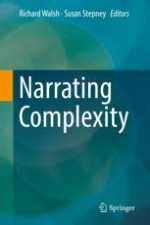2018 | OriginalPaper | Chapter
16. Emergent Causality in Complex Films and Complex Systems
Author : Maria Poulaki
Published in: Narrating Complexity
Publisher: Springer International Publishing
Activate our intelligent search to find suitable subject content or patents.
Select sections of text to find matching patents with Artificial Intelligence. powered by
Select sections of text to find additional relevant content using AI-assisted search. powered by
